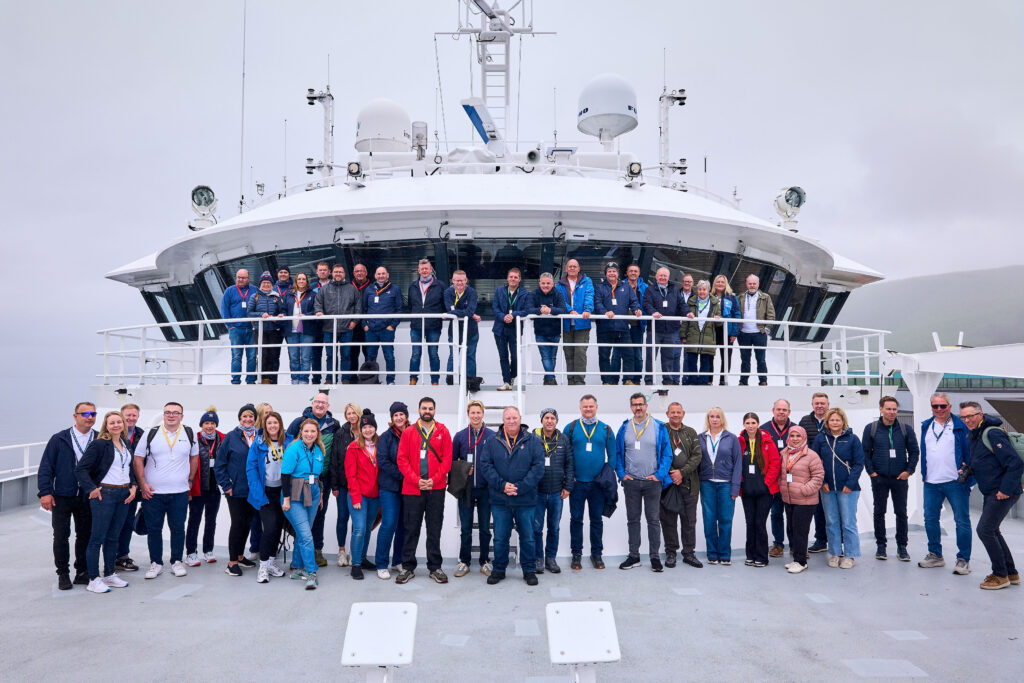Fry Magazine editor Helen Edmonds joined this year’s National Fish & Chip Awards winners on a three-day educational study trip to Norway for a behind-the-scenes look at one of the world’s most advanced and sustainable seafood industries
I’ve read hundreds of press releases over the years in which Norway is praised for its world-leading approach to sustainable fishing, and I’ve interviewed countless shop owners who have returned from similar trips impressed by the vast state-of-the-art frozen at sea vessels – but witnessing it firsthand last week gave that reputation real weight.
What we encountered wasn’t just technology and efficiency, it was deep-rooted passion, long-term thinking and an understanding of sustainability that runs through every level of the supply chain.
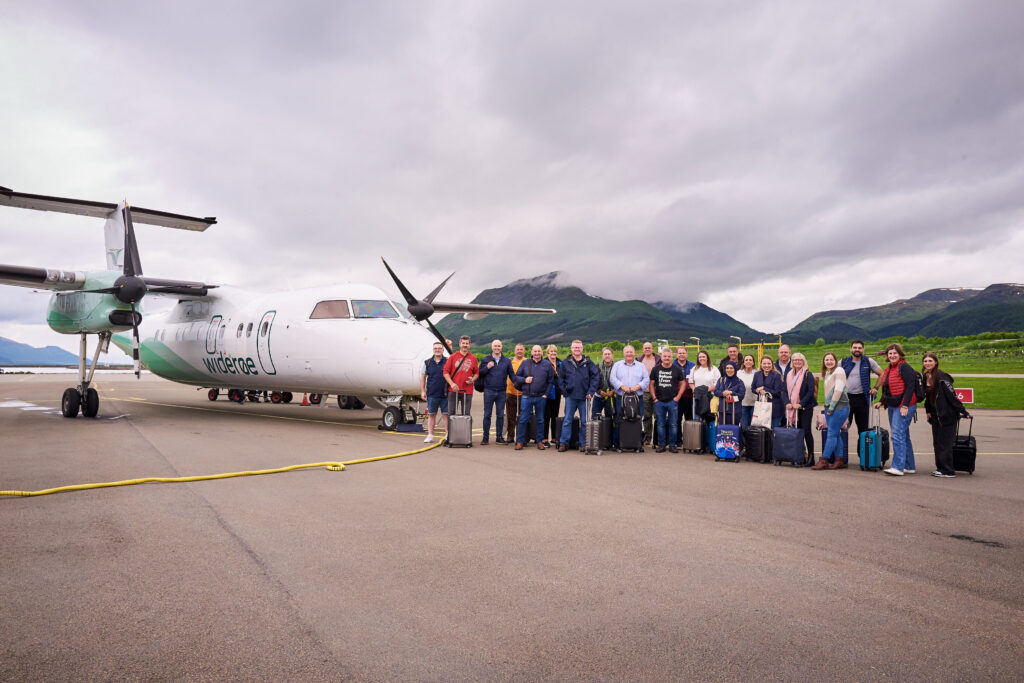
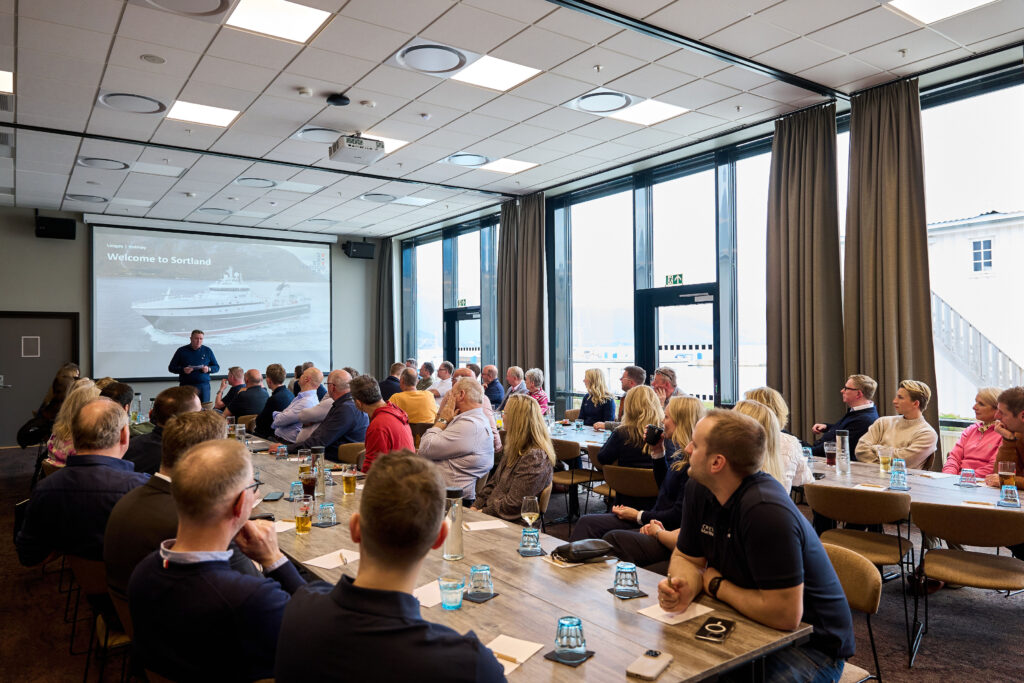
Down to business
After nearly ten hours of travelling and three plane journeys, our group of 22 landed in Sortland, northern Norway, where it was straight down to business with a series of mini-talks introducing us to the Norwegian frozen at sea fishing fleet. We were told that crews regularly work in some of the harshest conditions, facing 12-metre waves, -15°C water, and four to five weeks at sea, much of which is spent in complete darkness in the winter. There was an instant appreciation for the efforts of all involved to get responsibly sourced Norwegian frozen at sea cod and haddock to our doors.
Fortunately for us, it was a mild 10°C when the following day we stepped on board Langøy, a 12-year-old, state-of-the-art €85 million trawler owned by Holmøy Maritime, one of Norway’s largest family-owned fishing companies. It’s part of a significantly downsized but technologically advanced Norwegian fleet – a shift from 30,000 vessels in the 1970s to just over 5,000 today. This isn’t a story of decline but of innovation. Today’s vessels are fewer in number, but more efficient and high-tech, resulting in increased catch capacity.

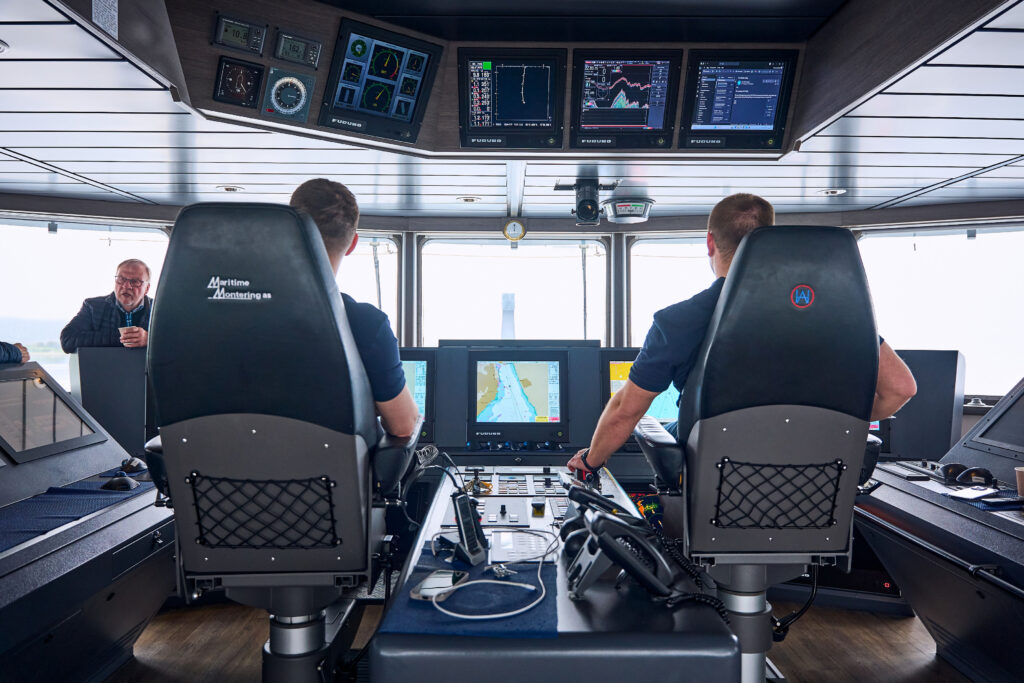

As we sailed through the stunning fjords, the bridge offered us 360-degree views of our surroundings and the cold, clear Norwegian waters we so often hear about. From here, two captains work alternating six-hour shifts, using advanced sonar, sensors and satellite monitoring to oversee everything from navigation to catch management. Up to 60% of Norway’s fishing waters are closed to commercial fishing, and captains are trained not only to locate fish but also to avoid certain species, sizes or protected zones. It’s a highly skilled role that balances efficiency with long-term sustainability.
Below deck
Below deck is where the processing happens and it’s staggering the amount of machinery that is packed in here. It’s all needed, however, to process the 35,000 tonnes of cod and haddock fillets this vessel handles.
From the moment the nets are hauled in, to the fish reaching the aptly named “freezer hotel,” cod and haddock are processed, packed and frozen within just three hours of leaving the sea. That speed is critical to maintaining quality – and it’s where Holmøy’s commitment to supplying premium seafood really comes into focus.
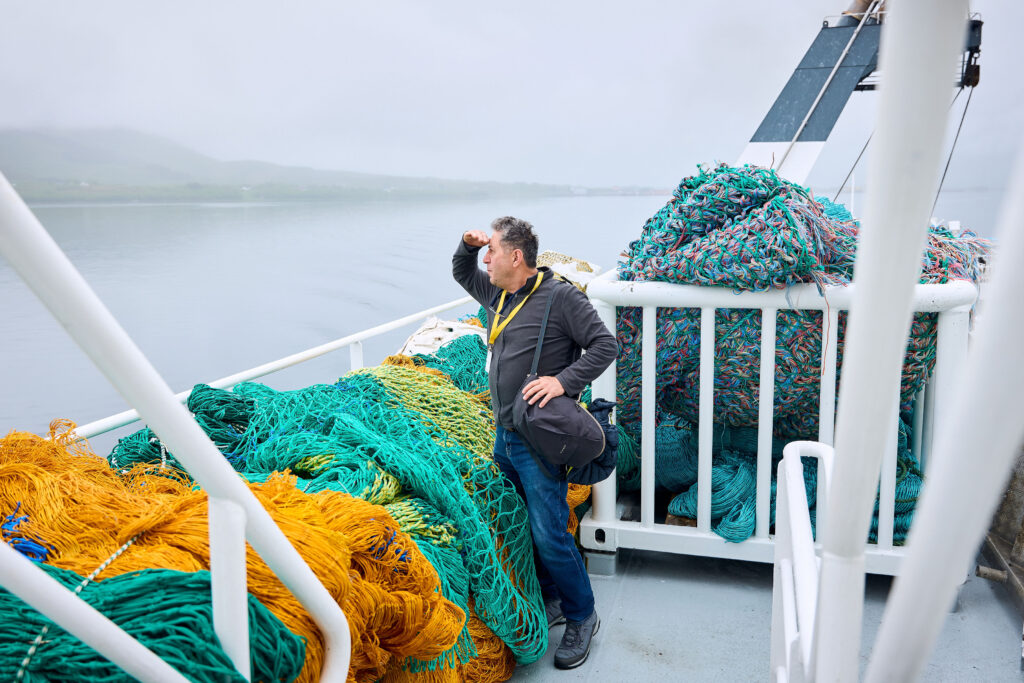
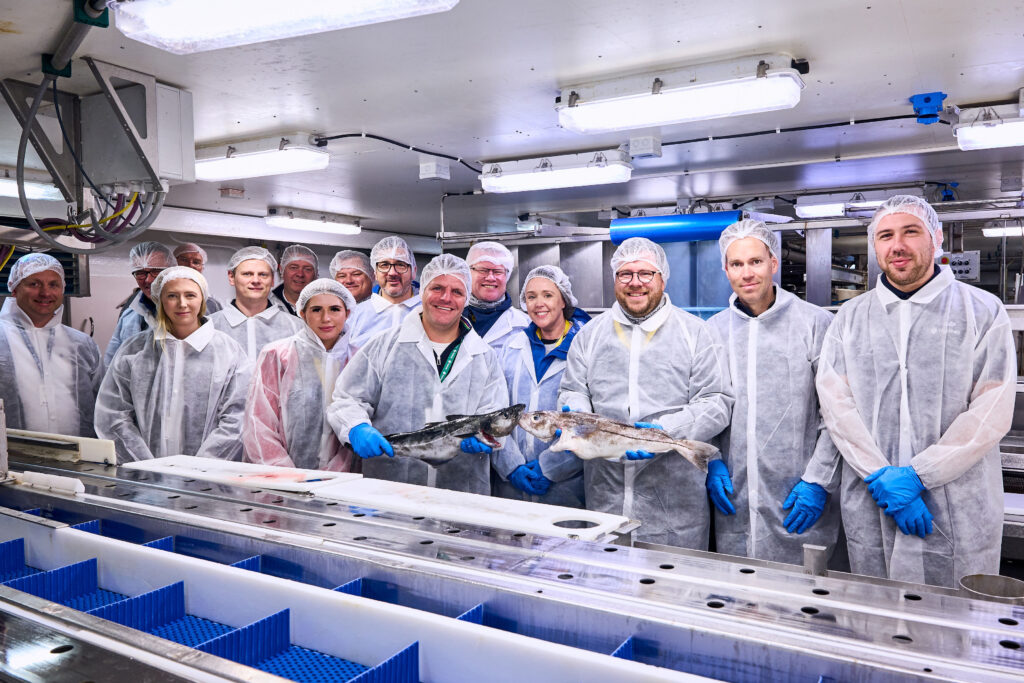
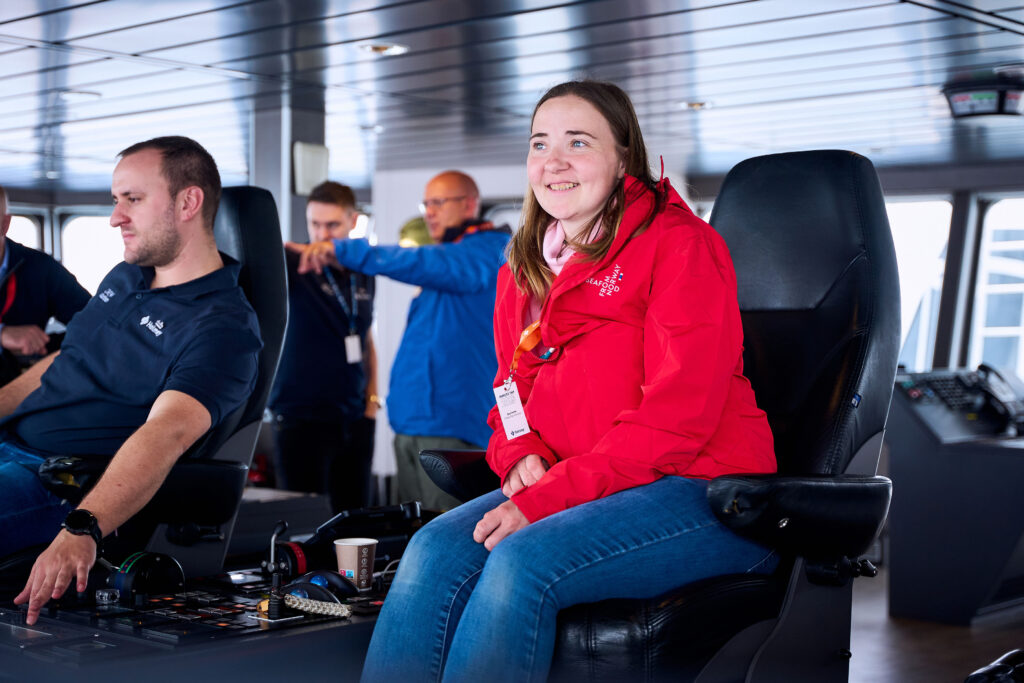

I asked, if every vessel is fishing for the same fish, what sets one boat’s catch apart from another? The answer lies in the processing line. Timing, skill and attention to detail make all the difference. For example, if the nets are pulled too early and the processing line isn’t ready, quality can suffer. If fillets are not skinned or graded correctly, they will be rejected. It’s a fine balance – and one this crew has mastered.
Importantly, nothing goes to waste on board. Heads, skins and trimmings are all repurposed, reinforcing a culture of sustainability and efficiency at every stage.
Although the 48-strong crew are at the heart of the operation, Langøy also makes use of robotics for tasks like stacking, wrapping and transporting boxes to the freezer. We’re told robots have been trialled packing fillets into boxes, but they haven’t yet matched the precision and care of human hands.
Even in this highly technical environment, the focus on crew welfare is clear. Quarters are spacious, meals are freshly prepared, and facilities include a gym and a shared dining room. It’s a reminder that sustainability isn’t just about the fish – it’s also about the people who bring it to shore – and it made me wonder, how many shops think about the welfare of the crew when they’re sourcing their fish.
Equally impressive was our visit to Holmøy’s salmon processing operation, which handles 30,000 tonnes of farmed salmon annually. While not the largest producer, Holmøy has to be the most high tech. For example, an extensive digital control centre that could easily be mistaken for MI5 monitors every salmon pen. Despite being many miles out at sea, each fish can be seen and if a single lice lands on one, staff zap it with a laser beam from their desk!
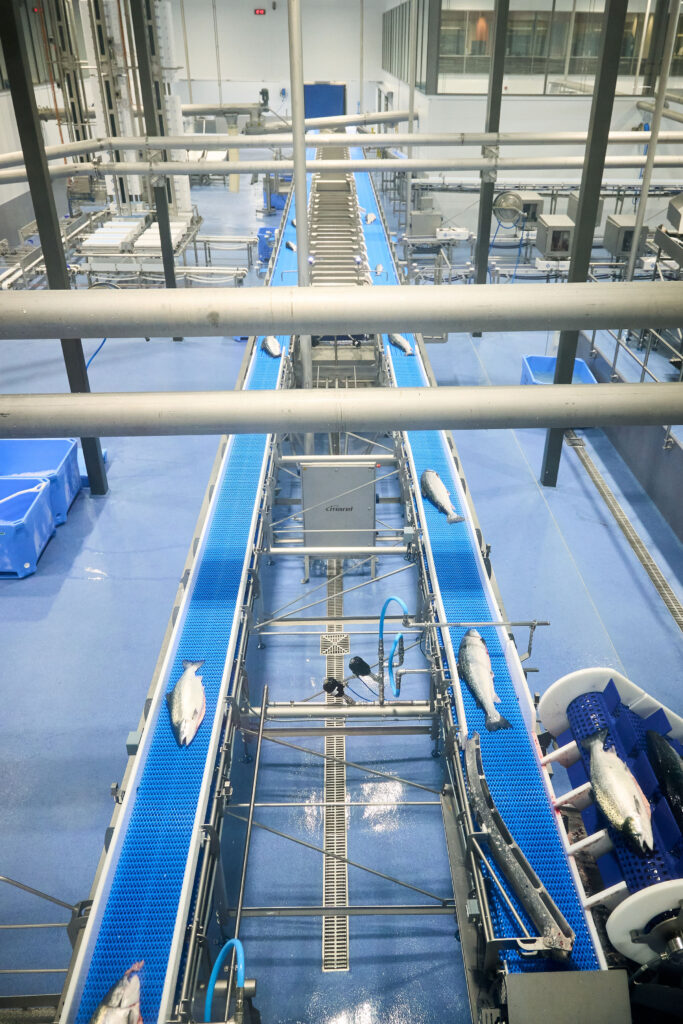
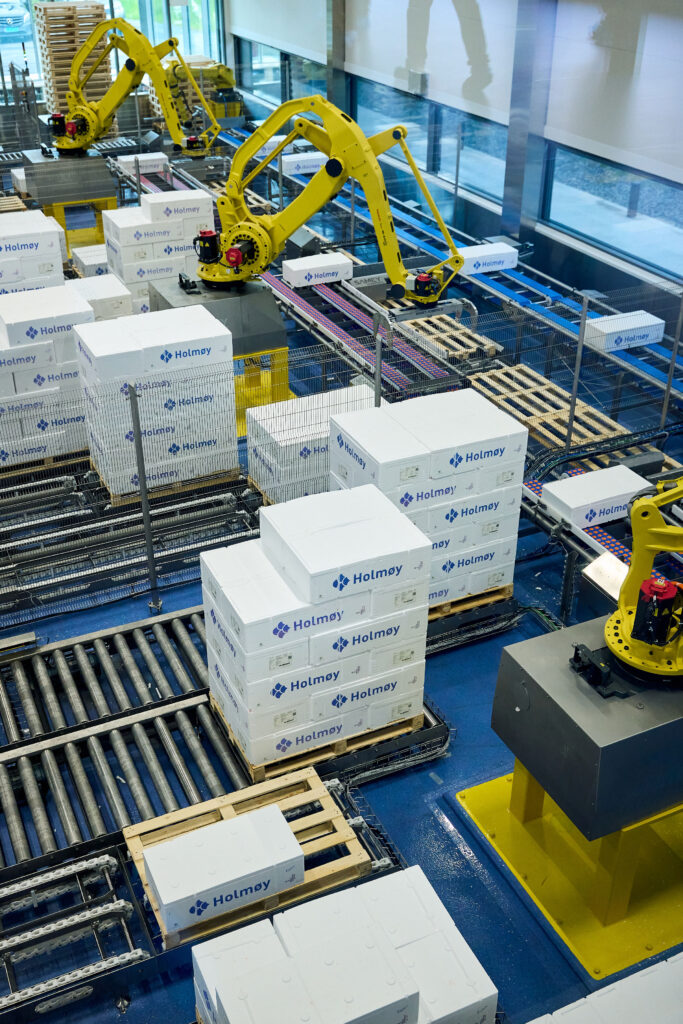
The production facility, which opened just last year, features a 360-degree wraparound glass walkway, allowing every part of the operation to be visible. It’s a clear statement of transparency. Visitors are welcomed, nothing is hidden, and there’s evident pride in the practices, the technology and the people behind it all.
As whole salmon and fillets move rapidly along the line, we’re told it takes just one hour from processing to packing. From sea to market, Holmøy’s farmed salmon can be in the UK within 50–60 hours. Impressively, over 90% of each salmon is utilised – including the blood – more evidence of Holmøy’s commitment to efficiency and minimal waste.
Togetherness
An aspect of this trip that really made it unique in my opinion was how everybody came together. Everyone was present from the vessel owners and the captain to distributors and end-users, sharing knowledge, asking questions, and working on solutions together. Whether it was the coastguard explaining how they inspect net sizes and monitor catches down to the kilogram, or chip shop owners discussing the challenges of rising fish prices, the trip created a forum for open, honest discussion.
Take the example of saithe, often overlooked by chip shops due to its pearly grey flesh. Recent feedback from UK operators has prompted Norwegian processors to work on developing deeper skinning techniques, opening the door for a more sustainable species to enter the UK market. It’s a small but significant win – driven by communication and mutual respect.

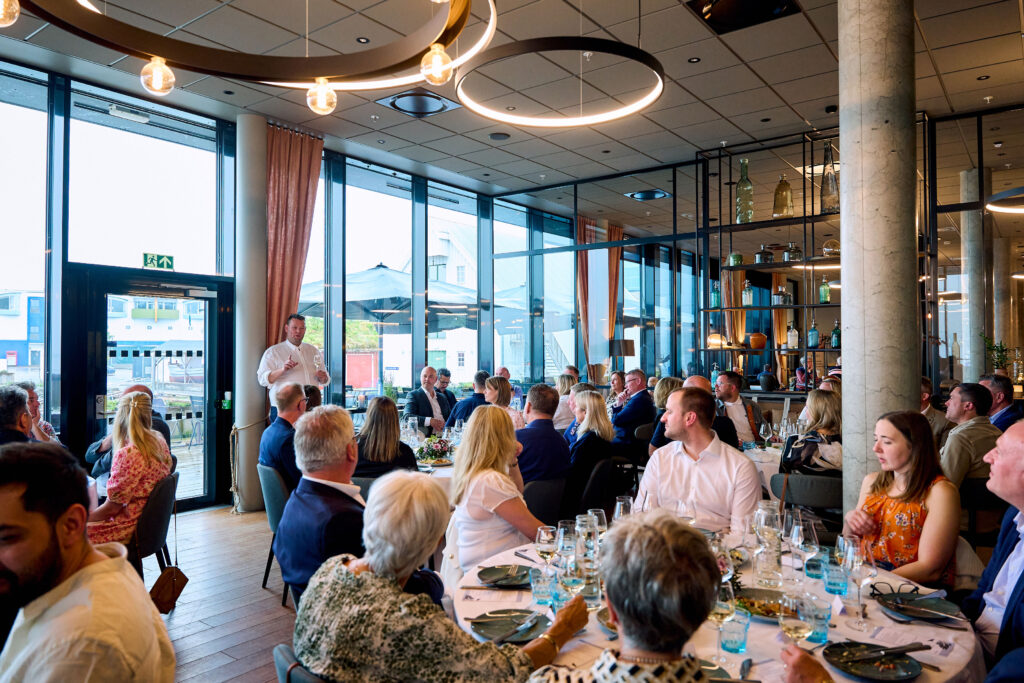
Norway’s seafood industry isn’t just about catching fish – it’s about future-proofing a national resource. That means protecting fish stocks, but also minimising waste, investing in people, and delivering a consistently high quality product. For UK fish and chip shops, the parallels are clear: pride in what’s served, care in how it’s prepared, and a responsibility to sourcing sustainably.
What stood out more than anything on this trip was not just how deeply the Norwegians understand sustainability but how well they understand the importance of fish and chips to us. Their goal is simple: to provide the best product possible so we can serve it with confidence.
A big thank you to Seafood from Norway, Nor Seafoods and the NFFF for making the trip possible. It’s true what everyone kept saying – the Norwegians were exceptional hosts.

